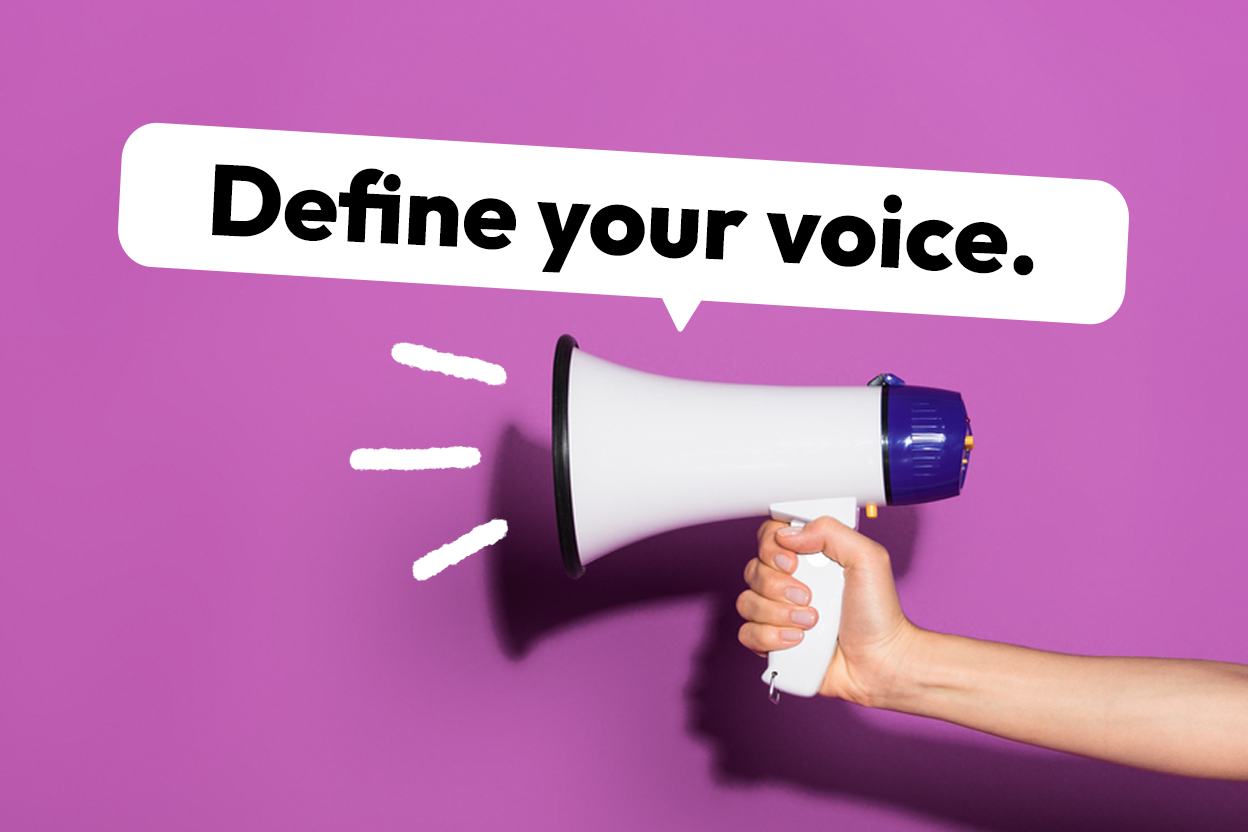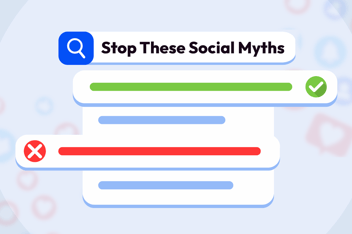Brand Voice vs. Tone: What’s the Difference?


In today’s digital landscape, standing out isn’t just about what you say—it’s about how you say it. Your tone of voice is the personality and emotion behind your words, and it plays a crucial role in shaping your brand identity. Whether you’re crafting social media posts, writing website copy, or engaging with customers in comments, the right tone can build trust, foster loyalty, and drive engagement.
But how do you define your brand’s voice? And how can you use it to create compelling content that resonates with your audience? Let’s dive into tone of voice, its impact on your brand, and how you can fine-tune yours for maximum social media success.
What Is Tone of Voice?
Your brand voice is what you say, while your tone of voice is how you say it.
Your brand voice remains consistent across all channels, but your tone of voice can shift depending on the situation, audience, or platform. Think of it like this: a person’s personality doesn’t change, but the way they speak might—whether they’re giving a speech, having a casual chat, or writing an email.
For example, if you have a 404 error page on your website, here’s how tone can change the message:
🔹 Formal & Professional: “We apologize, but this page is not available.”
🔹 Casual & Playful: “Uh oh! It looks like you’ve taken a wrong turn!”
Both convey the same message, but the tone determines how the reader experiences it.
Brand Voice vs. Tone: What’s the Difference?
Think of brand voice and tone of voice as two sides of the same coin.
🔹 Brand Voice = Your brand’s overall personality and values
🔹 Tone of Voice = How you express that voice in different situations
Brand Voice = Personality
Your brand voice is the foundation of your communication. It defines your company’s character, mission, and values. Some brands are fun and lighthearted (e.g., Wendy’s on Twitter), while others are serious and authoritative (e.g., The Wall Street Journal).
Tone of Voice = Adaptation
Your tone of voice can change based on the platform, audience, or message. For example:
✔️ On Twitter, you might be witty and conversational.
✔️ In a press release, you might be formal and professional.
✔️ On a customer support page, you might be empathetic and reassuring.
Your brand voice stays consistent, but your tone adapts to fit the context.
Why Tone of Voice Matters for Social Media Success
Social media isn’t just about posting content—it’s about connecting with your audience. And tone of voice plays a huge role in that connection.
1️⃣ Tone Builds Brand Recognition
The most successful brands have distinct voices. When you hear or see their content, you instantly recognize them. Nike, Apple, and Starbucks all have strong, recognizable voices that make them stand out.
✅ Example: Wendy’s Twitter is famous for its snarky, humorous tone, which has helped it go viral and engage with customers in a way that feels authentic.
2️⃣ Tone Establishes Trust & Credibility
Customers trust brands that feel authentic and consistent. If your tone matches your brand values, people are more likely to trust your messaging and engage with your content.
✅ Example: A healthcare company using a calm, professional tone reassures customers and builds credibility.
3️⃣ Tone Improves Engagement & Conversions
The right tone boosts engagement by making your content more relatable and compelling. If people connect with your message, they’re more likely to like, comment, and share—driving organic reach.
✅ Example: A fun, conversational tone on Instagram can humanize your brand, making followers more likely to interact with your posts.
How to Define Your Brand’s Tone of Voice
To create a consistent and engaging brand tone, follow these four steps:
Step 1: Identify Your Brand Personality
Ask yourself: If your brand were a person, how would it speak?
🔹 Is your brand casual or formal?
🔹 Is your tone humorous or serious?
🔹 Is your voice inspirational, educational, or authoritative?
💡 Exercise: Choose 3-5 adjectives that define your brand personality (e.g., bold, friendly, witty, professional, empowering).
Step 2: Know Your Audience
Your tone should resonate with the people you’re speaking to.
🔹 Are your followers young and tech-savvy? (Casual & fun tone)
🔹 Are they B2B professionals? (Authoritative & formal tone)
🔹 Are they customers looking for guidance? (Supportive & empathetic tone)
💡 Pro Tip: Create buyer personas to understand your audience’s pain points, interests, and preferred communication style.
Step 3: Adapt Your Tone for Different Channels
While your brand voice stays the same, your tone of voice should adapt for different platforms.
📢 Example of Tone Variations Across Social Media Channels:
✔️ Twitter (Casual & Conversational): “🚀 Big news! Our new AI tool just dropped—get ready to boost your engagement! #SocialMediaSuccess”
✔️ LinkedIn (Professional & Insightful): “New AI-driven tools are revolutionizing social media marketing. Here’s how they can help your brand grow.”
✔️ Instagram (Fun & Visual): “Your next viral post? Our AI has it covered! 🎯 Tap the link in bio to start creating now.”
✔️ Facebook (Community-Oriented): “We love seeing our users grow their social presence! Comment below with your biggest success story! 👇”
📌 Tip: Adjust your tone to match the platform and audience without losing your brand’s personality.
Step 4: Create a Brand Tone of Voice Guide
To ensure consistency across all marketing efforts, document your tone guidelines in a Brand Voice Guide.
📖 Your guide should include:
✔️ Brand Voice Description: (e.g., “Friendly, confident, and empowering”)
✔️ Do’s & Don’ts: (e.g., “Use clear, conversational language. Avoid jargon.”)
✔️ Examples of Tone in Action: (e.g., “Formal vs. casual responses”)
💡 Pro Tip: Train your team to follow the guide so that every social media post, ad, and email aligns with your brand’s voice.
Final Thoughts: Master Your Tone, Master Your Brand
Your tone of voice is a powerful tool that can define your brand, build connections, and increase engagement. Whether you’re crafting a social media post, responding to customer comments, or launching a campaign, your tone should feel natural, consistent, and aligned with your brand personality.
🚀 At SocialPost.ai, we help businesses create AI-powered, high-engagement social media content with the perfect tone—so you can focus on growing your brand.
💡 Ready to elevate your social media game? Try SocialPost.ai today and start creating compelling, on-brand content that connects with your audience!


